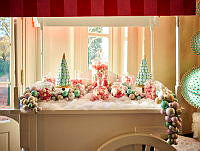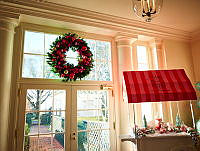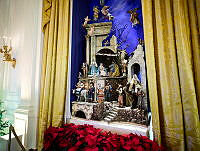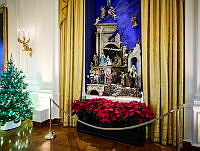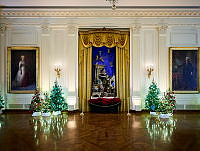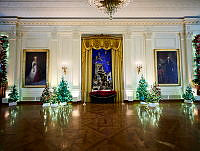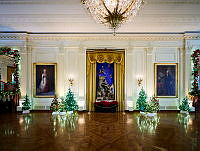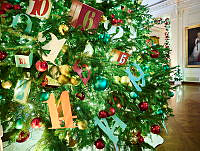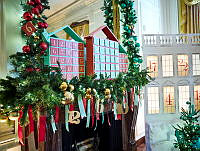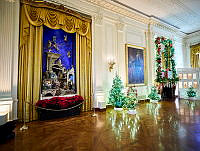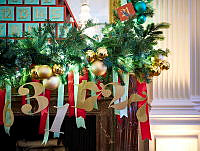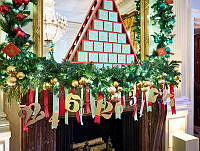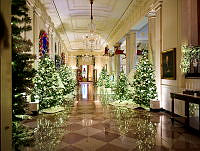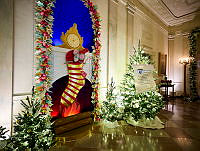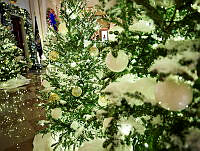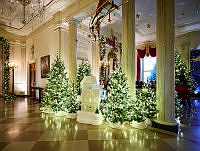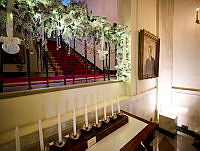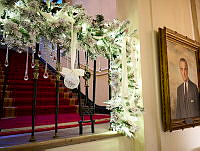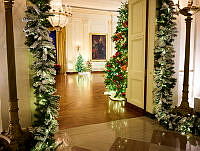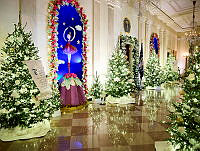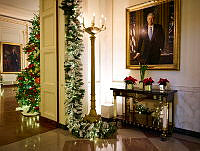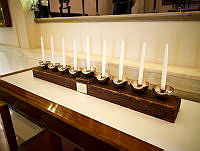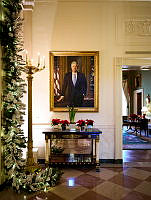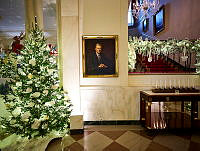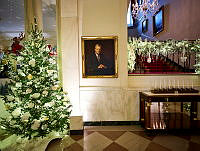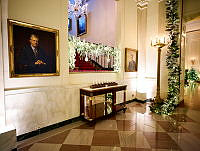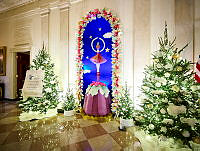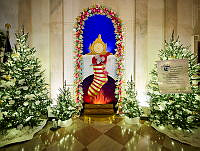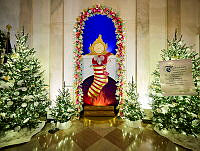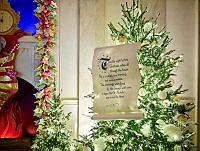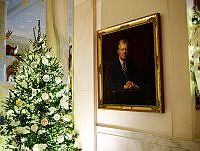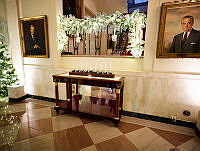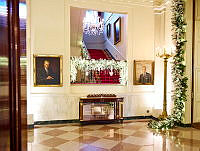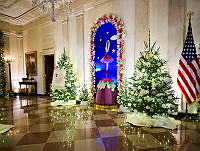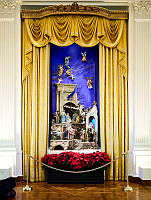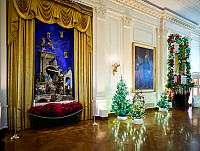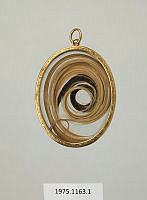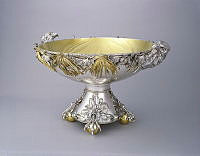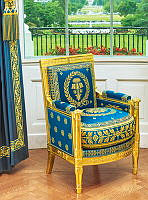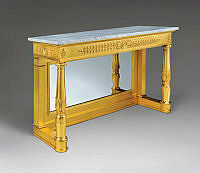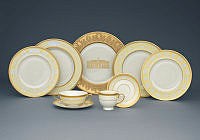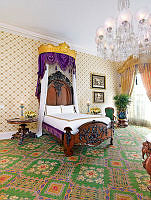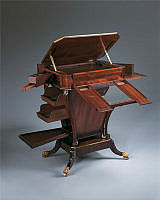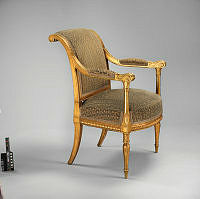An Essay on "Tiber Creek: The Bathers" by Peter Waddell
John Quincy Adams Takes a Deadly Chance, 1825
Copyright © White House Historical Association. All rights reserved under international copyright conventions. No part of this article may be reproduced or utilized in any form or by any means, electronic or mechanical, including photocopying, recording, or by any information storage and retrieval system, without permission in writing from the publisher. Requests for reprint permissions should be addressed to books@whha.org

Peter Waddell, Tiber Creek: The Bathers, oil on canvas, 48 x 72.
Peter Waddell for the White House Historical AssociationTiber Creek now flows safely beneath a masonry vault, over which passes Constitution Avenue. In the 1820s, the open creek raced dangerously to the Potomac River through the sweeping landscape you see here. From marshy creek banks, the land rose gently to the elevation upon which the White House stood. Its muddy realities were covered by grasses and wildflowers.
President John Quincy Adams, sixth president of the United States, and son of the second president, liked to take his exercise swimming early mornings when the weather was welcoming. The fifty-seven year old president never swam alone, and his usual companion was the White House steward Antoine Michel Giusta. On June 13, 1825, his son John, who was in his early twenties and his father's secretary, also went along.
On the morning the picture represents, the president decided to commandeer an abandoned boat, row it down Tiber Creek across the river then swim back, keeping the boat nearby for safety. Suspicious that the boat was too leaky, young John stripped-down, and waded away to the river, intending to dive in and accompany the swimmers on their return. But by the time the boat was swept into the Potomac from the swift creek, it was filling with water; danger was quickened by a sudden squall from the north, and the boat began to sink. Giusta, already naked, jumped into the water. The president scrambled overboard, still dressed, and would have been weighted down by his clothes, had Giusta not been at hand to pull him to the shore.
The president lay gasping on the riverbank, attended by his son, while Giusta departed to secure a vehicle. A visitor passing by saw the whole thing and quickly reported it to the waking capital, where the subject of a president dying in office remained current for days afterward. The incident, widely reported, was naturally an embarrassment to the president. He described the near-tragedy in detail that evening in his diary, concluding: "...By the blessing of Heaven our lives were spared..." And He pledged to try no further feats of athletic skill but to strictly confine himself to purposes of health, exercise, and salutary labor.











